Golden sunshine on Ka Tun Ferry
(Baonghean) - The mist begins to clear on the Pha Ka Tun range, the golden sunlight shines down on the sa mu roof - a sign of the coming of spring. At this time, the Mong people in Nam Tot village (Tri Le commune - Que Phong) are excited to welcome the new year and a bustling festival season...
It has been a long time since the Tri Le border area (Que Phong) had a beautiful day, with clear skies, warm sunshine, green trees swaying gently in the wind, and birdsong echoing throughout the mountains. With the opportunity of "heavenly time" and "favorable location", we were determined to ride our "iron horse" along the trail up the Pha Ka Tun range to Nam Tot - the most remote village in the remote border district of Que Phong.
It is said to be “favorable terrain” but only in part, because the winding, steep and slippery trail has many sections, the “iron horse” has to neigh continuously, jump up and then dive down to have enough strength to overcome. From the commune center, it takes more than 4 hours of hard work to reach Nam Tot.
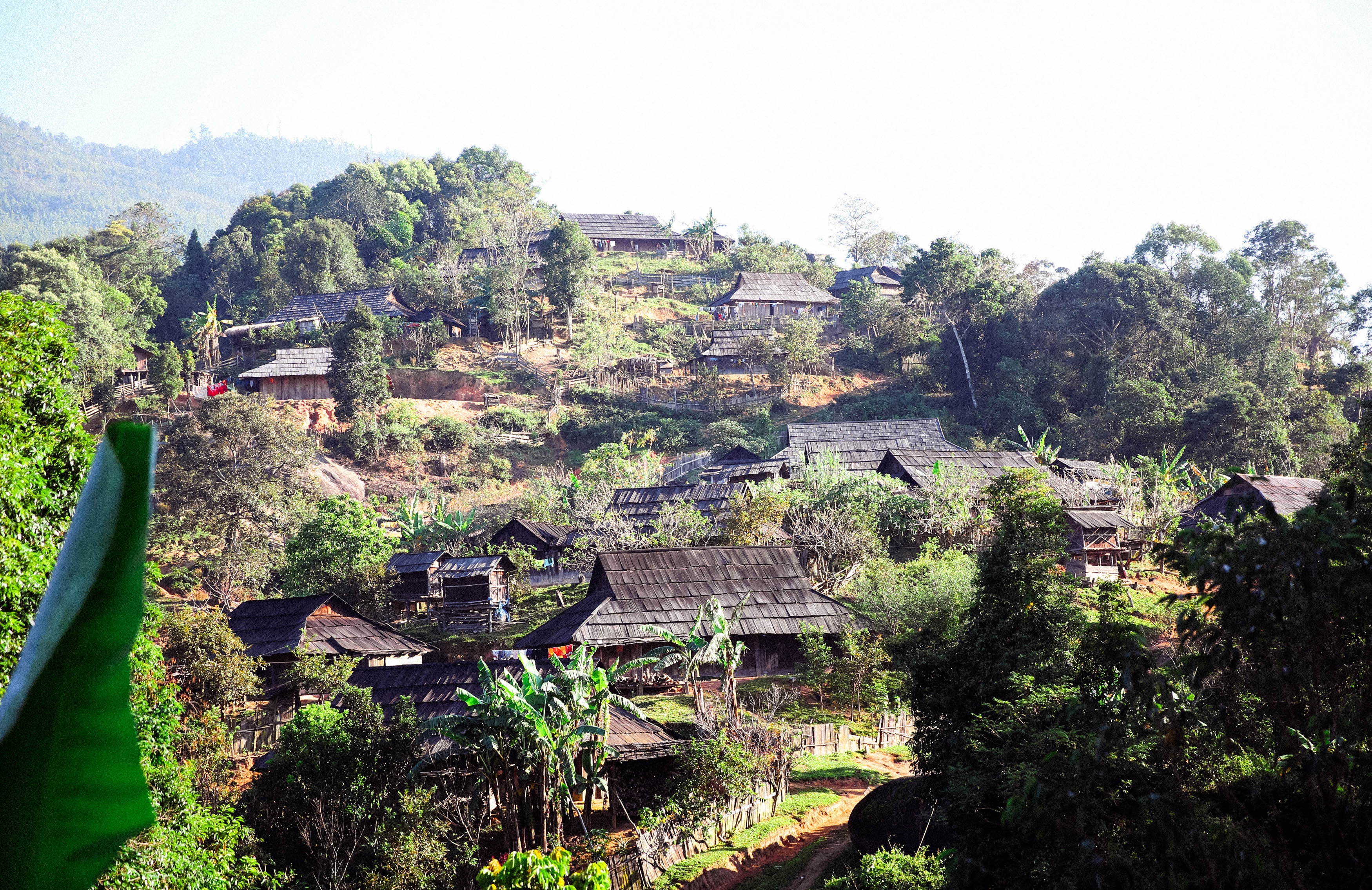 |
| View of Nam Tot village (Tri Le commune - Que Phong). Photo: Kien Phuong |
The first impression when coming to this land at the end of the border is the welcome gate of Nam Tot village. The gate is made from forest trees and roofed with palm leaves, simple materials but what makes the impression is the shape designed in the style of a tower, looking from afar like a small house. The people here explain that the design and construction of this welcome gate is for visitors to come on rainy days to rest and regain strength after a long journey before entering the village. That means not only affirming the existence of a village community but also showing the hospitality of the residents on top of Pha Ka Tun.
Anyone who has been to Nam Tot must have been moved by the ancient beauty of the houses covered with sa mu wood panels. There are more than 40 houses here, all roofed with sa mu wood panels - a precious wood found only on high and cold mountain ranges. In the past, sa mu grew in forests, and when building a house, people only had to go to the forest to cut it down, split it into panels and then cover it with roofing material.
At an altitude of over 1,000 meters and a temperate climate like Nam Tot, the durability of sa mu roofs can last for decades. The proof is that there are houses here that are nearly a century old, but have never had their roofs replaced, and the roofs are still durable enough to protect against the sun and rain. Not only the roofs, but also the rice barns and livestock and poultry pens are covered with sa mu boards. The fences of each family are also made of small sa mu boards arranged together tightly and firmly, demonstrating the ingenuity and ingenuity of people who live all year round in the mist and mountain winds.
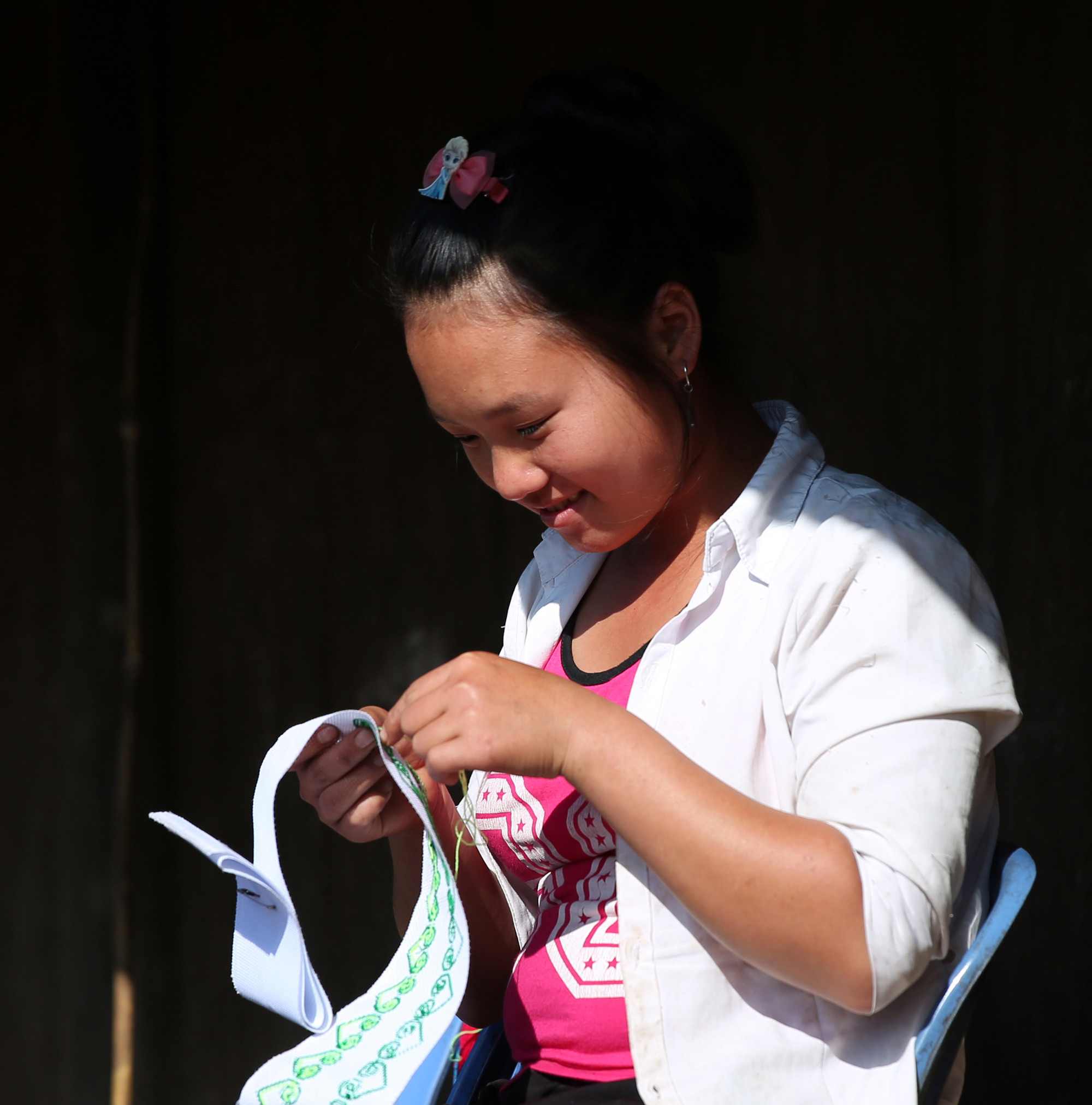 |
| Hmong girls in Nam Tot village, Tri Le commune (Que Phong) embroider skirts and shirts. Photo: Kien Phuong |
Another interesting thing when going to Nam Tot is witnessing horses climbing the mountain carrying goods. Ly Da Gia - one of the people who raise the most horses in the village said: "The road to Nam Tot is very difficult on sunny days, but on rainy days the "iron horse" cannot climb up, and the road to the fields is a hundred times more difficult. The Mong people here have to raise horses to carry goods from the fields back home; in the rainy season, they carry goods from the market back to the village, it is always a close animal to each family".
The mist had completely cleared, the sunlight was even more brilliant, the warmth spread throughout the great forest, the Nam Tot River was also less cold, the grass and trees seemed to be singing happily with the wind. From here, one could clearly see the Pha Ka Tun range stretching far and wide, on the other side was Laos, both sides shared the same green color, the same wind, the same scent, so the friendship was always warm.
On the rare sunny days in the cold season, the Nam Tot people take advantage of opening their granaries to dry the rice so that in a few days they can pound it into rice to make sticky rice cakes and wrap square rice cakes to worship their ancestors on the occasion of welcoming the new year. Living on the top of a steep mountain, the houses are close together, and there is not much land, most families do not have a drying yard so they have to spread the rice on large trays or tarps placed on the few vacant plots of land. The golden sunlight reflects on the golden rice trays, reflecting the happy faces of the Mong farmers on this distant mountain top.
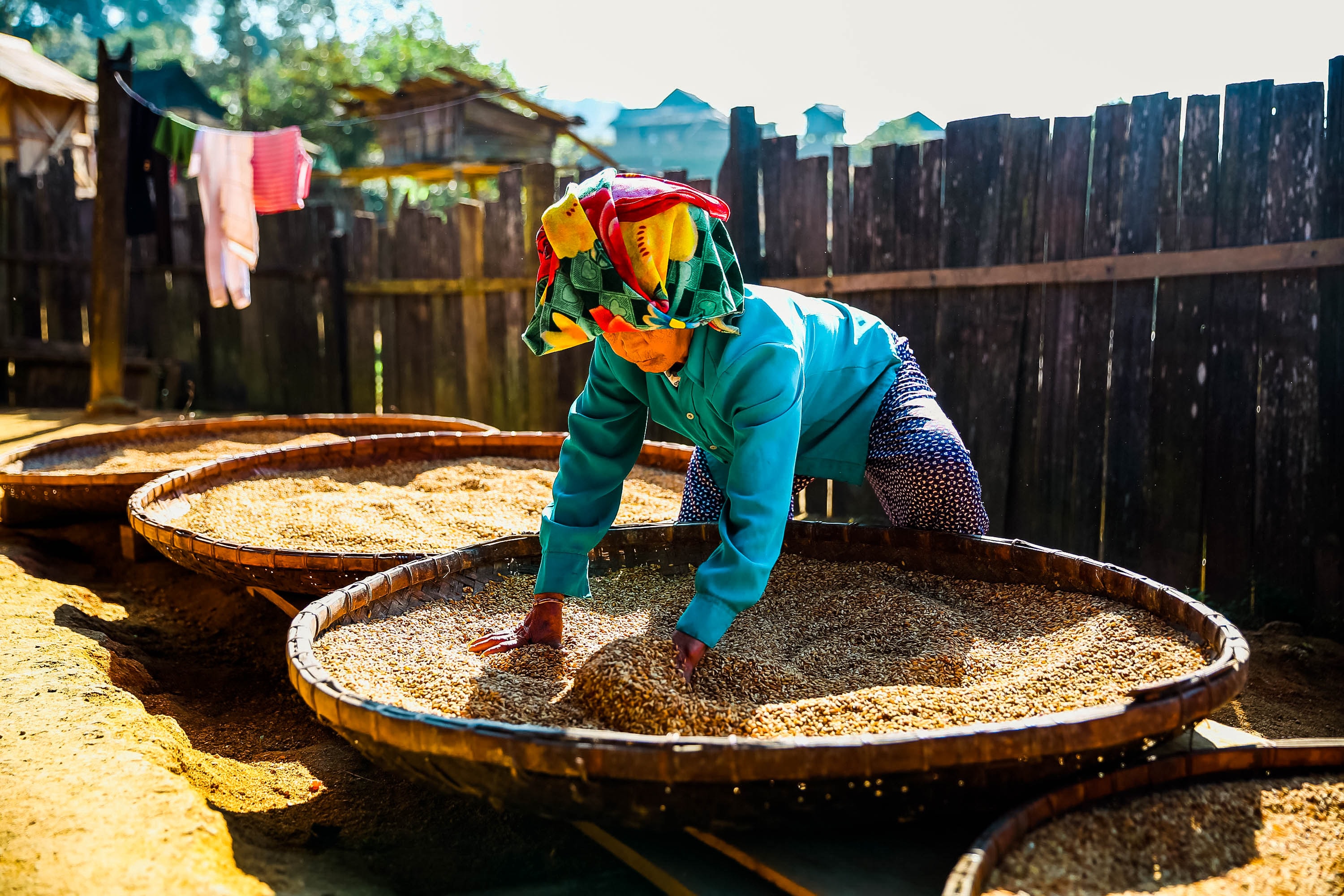 |
| On a sunny day, Mong people in the village dry rice. Photo: Kien Phuong |
Under the sunlight, the men sit weaving nets. Waiting for the weather to get warmer, they will follow the Nam Tot River to find fish and shrimp to improve the family's meals. The sunlight shines down on the porch, the Mong Nam Tot girls sit embroidering skirts, shirts and scarves in preparation for the upcoming festivals, their voices and laughter rising clearly in the space of the mountains and forests.
Ly Y Mua - an 18-year-old girl shared: "Every year I personally embroider dresses, shirts and scarves to go out to celebrate Tet and attend festivals. When girls in my village go to the fields, they don't need to dress nicely, but when they go out and attend festivals, they must have beautiful dresses and shirts. The Spring Festival here is very fun, boys from other villages come here to drink wine, throw pao in large numbers, many people play leaf flutes very well...".
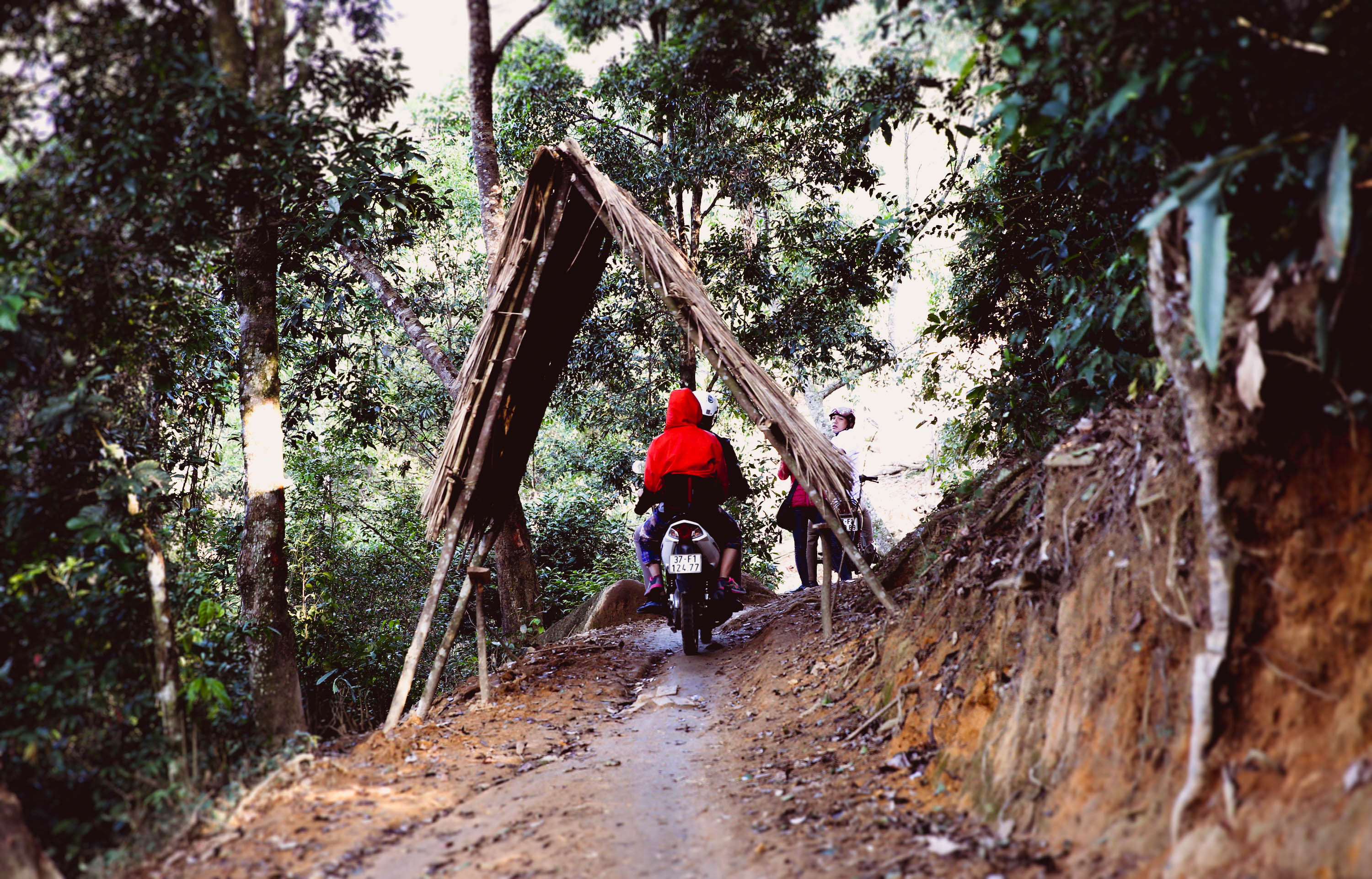 |
| The pillar-shaped welcome gate of Nam Tot village, Tri Le commune (Que Phong). Photo: Kien Phuong |
Hearing that there were visitors, Village Chief Ly Ba Gio immediately came to visit and shook hands firmly, as if meeting a close friend. Through his words, we could better imagine the hardships and difficulties of the Nam Tot people, especially the hardships and obstacles on the roads. However, the remoteness and obstacles have helped the Mong people here preserve their unique cultural features, from customs and habits to architecture, cuisine, language and costumes that have remained almost unmixed. The rhythm of life for generations has been associated with the cu xia and lu tau melodies - folk songs that have been passed down from ancient times...
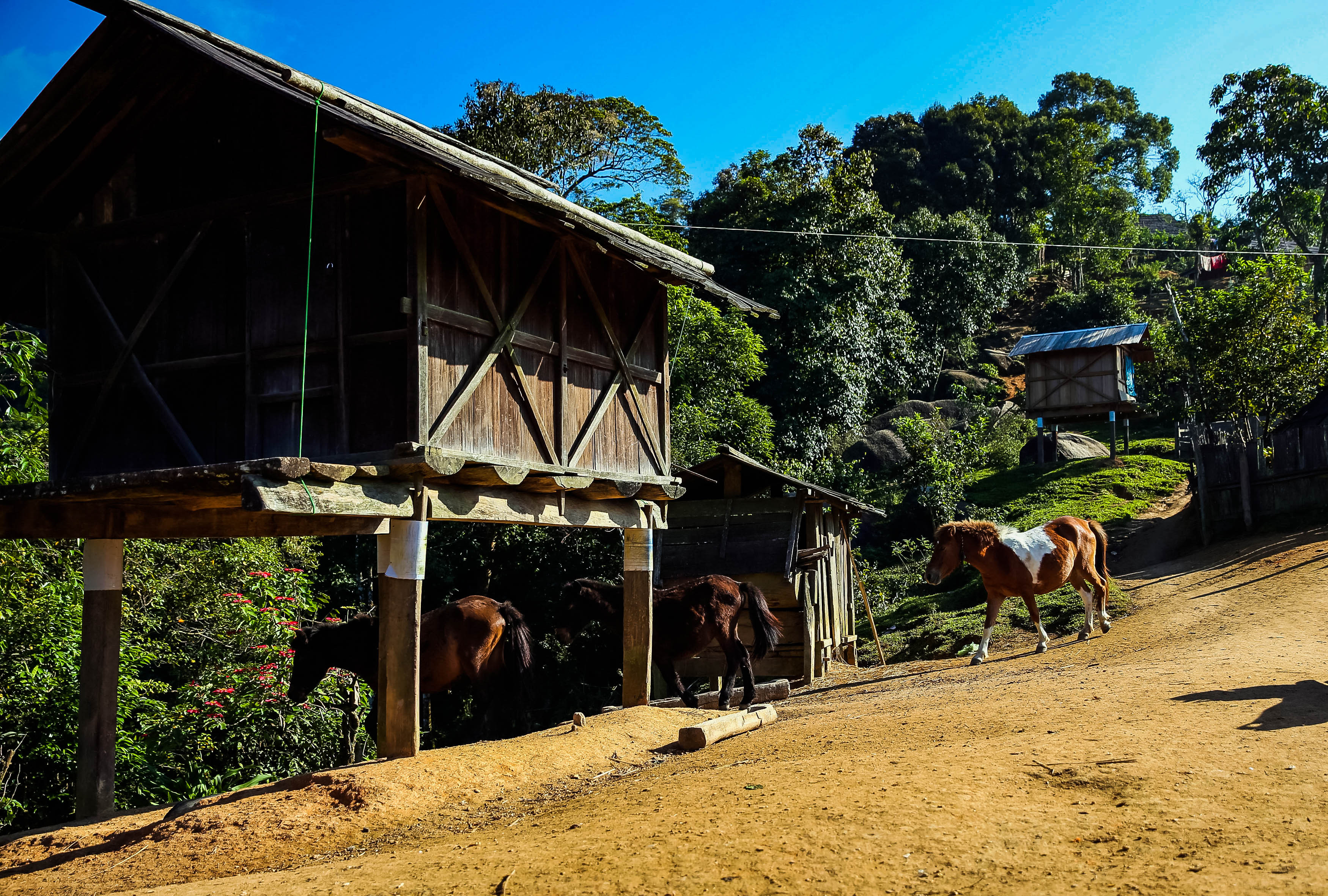 |
| The Mong people here still raise horses for transportation. Photo: Kien Phuong |
That night, staying at the village chief Ly Ba Gio's house, in the quiet of the night, we heard the bustling rhythm of the rice pounding, the occasional sound of the flute, and the laughter of young girls. The host said that tonight was less cold, and all these sounds announced the coming of Spring.


